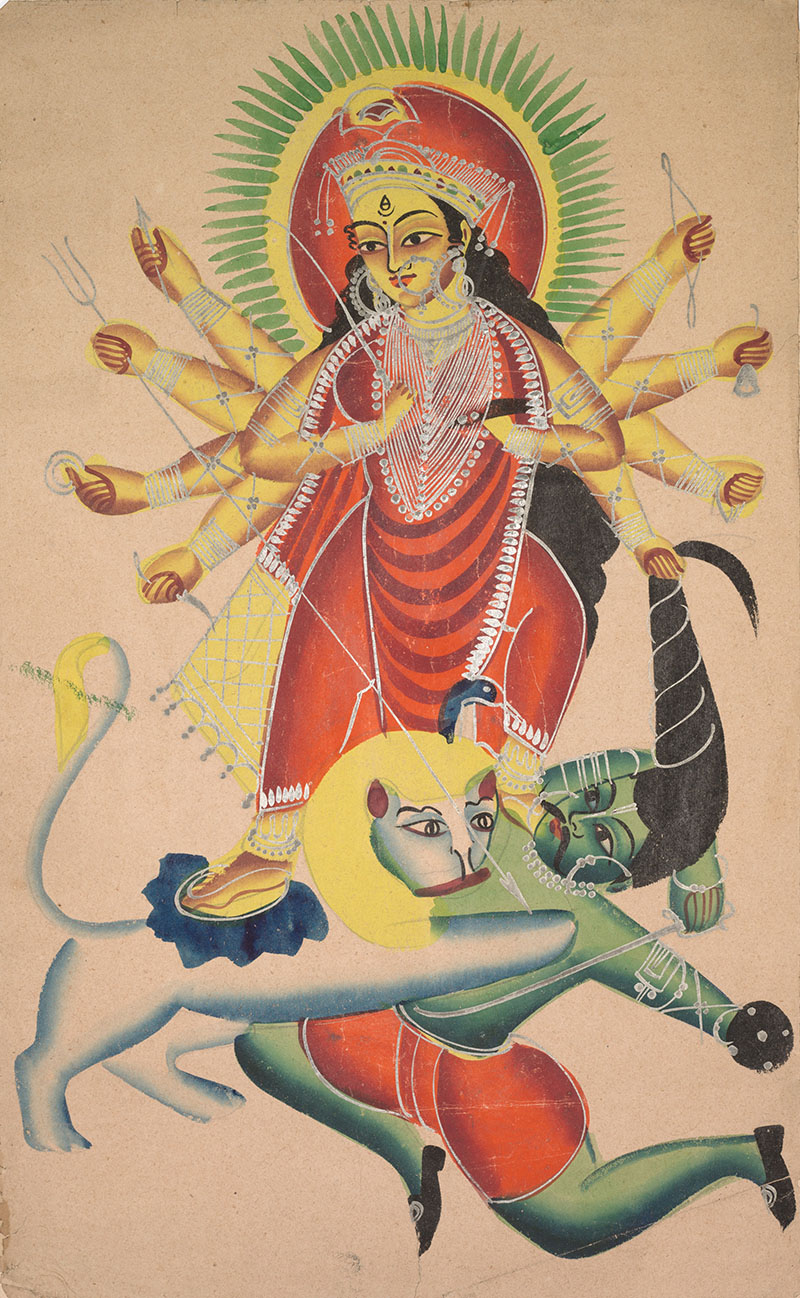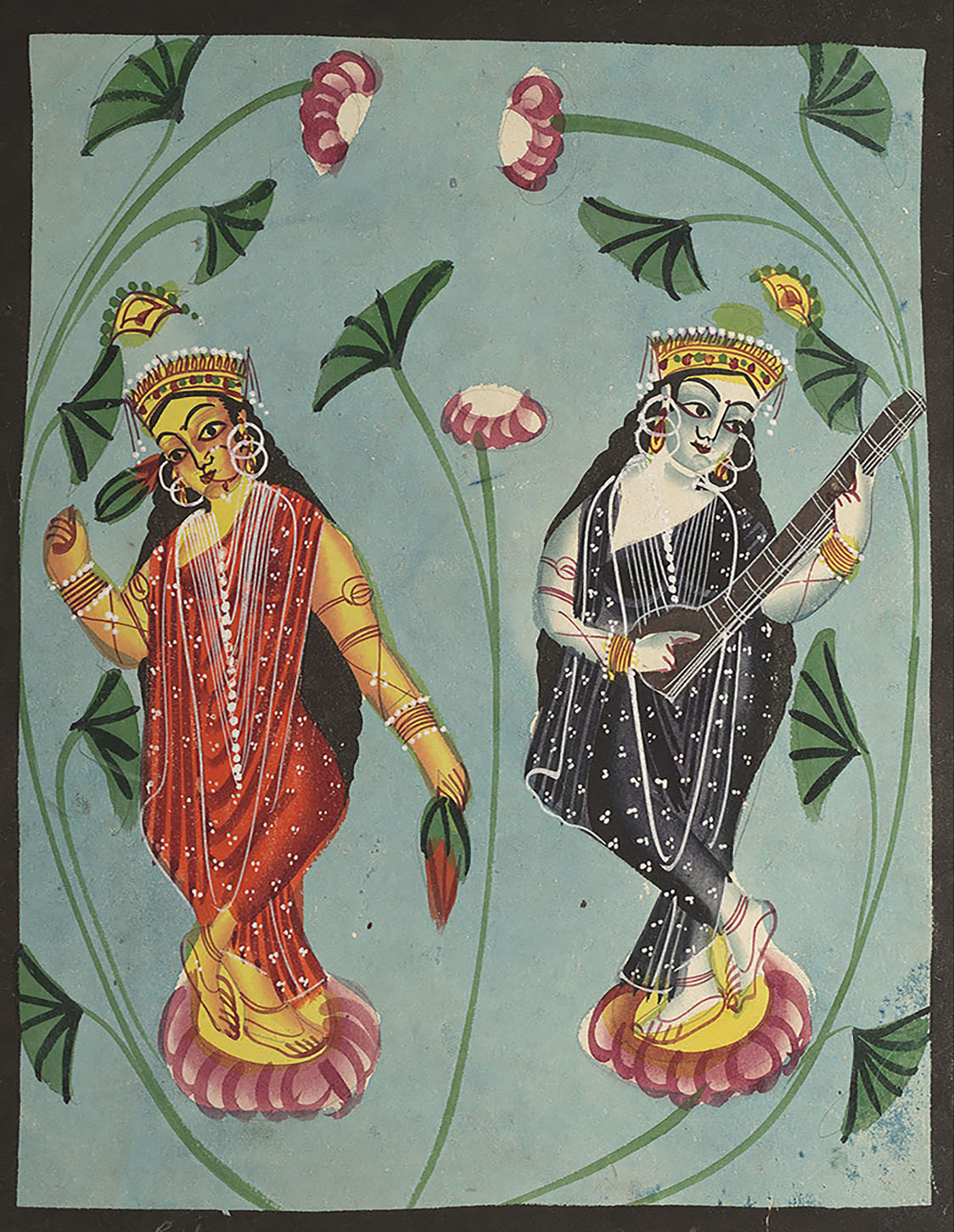ARTICLE
Bazaar Paintings
Another category of bazaar paintings is Kalighat painting. These paintings were also sold as tourist and pilgrimage souvenirs, but usually from the alleyways in the Kalighat area and from other temples in Calcutta, rather than from workshops run by professional artists with courtly pedigrees. The paintings, originally executed as palm-leaf scrolls, were later produced on inexpensive paper with the addition of distinctively European characteristics such as watercolours, shading for volume, and three-quarters profiles. Although generally linked to Hindu temples, the visual repertoire of Kalighat paintings included themes from other religions, such as Islam, as well as secular subjects. These included interpretive depictions of current events, Bengali proverbs, vignettes from contemporary literature and popular fiction, and satirical visual commentaries on the cosmopolitan culture and lifestyles of the emerging middle and upper classes of the city.
The commercial success of these forms of painting, followed by a rise in the popularity of similarly themed prints, resulted in indigenous presses emerging in these and other colonial centres. Bazaar paintings began to decline towards the late nineteenth century following the advent of photography in India, which superseded painting as both a commercial and colonial asset.
Bibliography
Our website is currently undergoing maintenance and re-design, due to which we have had to take down some of our bibliographies. While these will be re-published shortly, you can request references for specific articles by writing to hellomapacademy@map-india.org.








